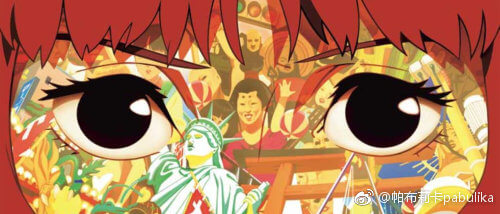On Plagiarism
《谈抄袭》
A literary or art work copied from others will be seen through no matter how skillfully it is disguised in a new form. That’s because you cannot assume to have the “soul” of the original. You think you’ve changed it into the soul of your work. But you can’t. It’s a pity that yours is not an original piece of work after all.
若是”抄袭”之作,无论你怎样改头换面,都会被看出来。因为原作那个”魂儿”,你变不不了。你以为你把它变成你的作品灵魂了,就是原创了。可惜你不是。
Take a painting for an example. Just a glance as it can give some idea of its source. One can easily detect how it is delineated. The source from which the figure’s facial expression if copied can also be traced.
比如某些画作,一看,就知道它的哪一笔是从哪来的,哪个人物的哪个表情是从哪来的。
The painting shows a migratory worker from farmland squatting at a corner of a city. He looks at people coming into and going out of luxurious places. Those people are depicted vividly, some big-bellied, some slender and coquettish, some radiant with joy and some full of pride and satisfaction. That worker is also vividly delineated: his expression on his face and in his eyes, his clothing and his bodily attitude are all true to life—showing the real living status of such a worker. Those magnificent houses are products of workers like him. It was they who had built them brick by brick and tile by tile until the construction work is finished by final decoration. That’s also time for him to go, he had no right to stay and enjoy the fruit of his labor.
有幅画,画了一位农民工,蹲在都市一隅,望着某一奢侈场所进进出出的人。那些人,或大肚便便,或婀娜妖冶,或春风满面,或踌躇满志,一个个都很生动。那个农民工画得也很逼真。表情,眼神,衣着,姿势等等都很到位,真实地反映了”农民工”的生存状态。那些建筑,都是他们一砖一瓦砌出来的,但装修完之后,他就再也没有机会进去了,更别提进去”享受”了。
The idea to portray such a scene is praiseworthy, and the painting is also skillfully produced, but it is not qualified for a prize of creation. The reason is very simple: it is a product of plagiarism. A foreign painter had produced earlier a picture of a circus clown squatting wearily at a corner near the gate, looking at the audience leaving after the end of the show. They went away paying no attention at all to the clown who had caused them a lot of laughter.
就画作本身而言,立意和画技的确不错,但若授予某一级别的”创作奖”,似乎就不够格了,因为这幅画是”抄袭”之作。外国曾经有位画家,画过一个马戏团的小丑,疲惫地蹲在剧场的一个角落里,望着散场离去的人。那些离去的人,没有一个在意这个刚刚还给他们带来过笑声的小丑。
So we see what plagiarism is, it’s not what we call “draw on the achievement of others”.
这就是”抄袭”,不是”借鉴”。
未经允许不得转载:帕布莉卡 » 吴营洲《谈抄袭》 ~ 文学翻译-经典英译-中英双语赏析
 帕布莉卡
帕布莉卡


 爱是一颗心遇到另一颗心(出处+配图)
爱是一颗心遇到另一颗心(出处+配图) 

